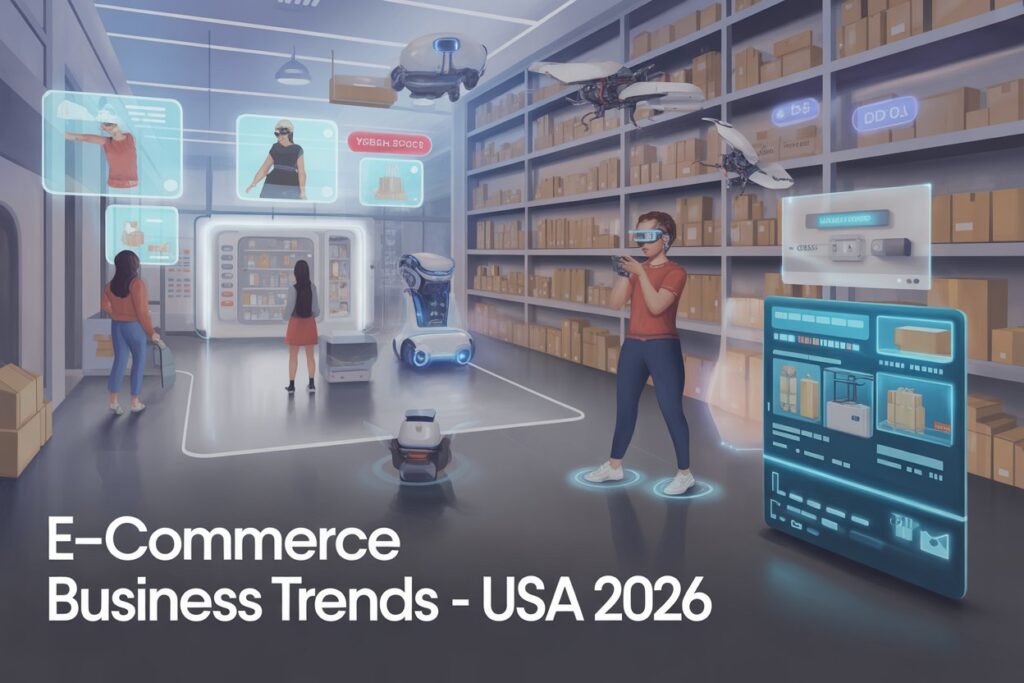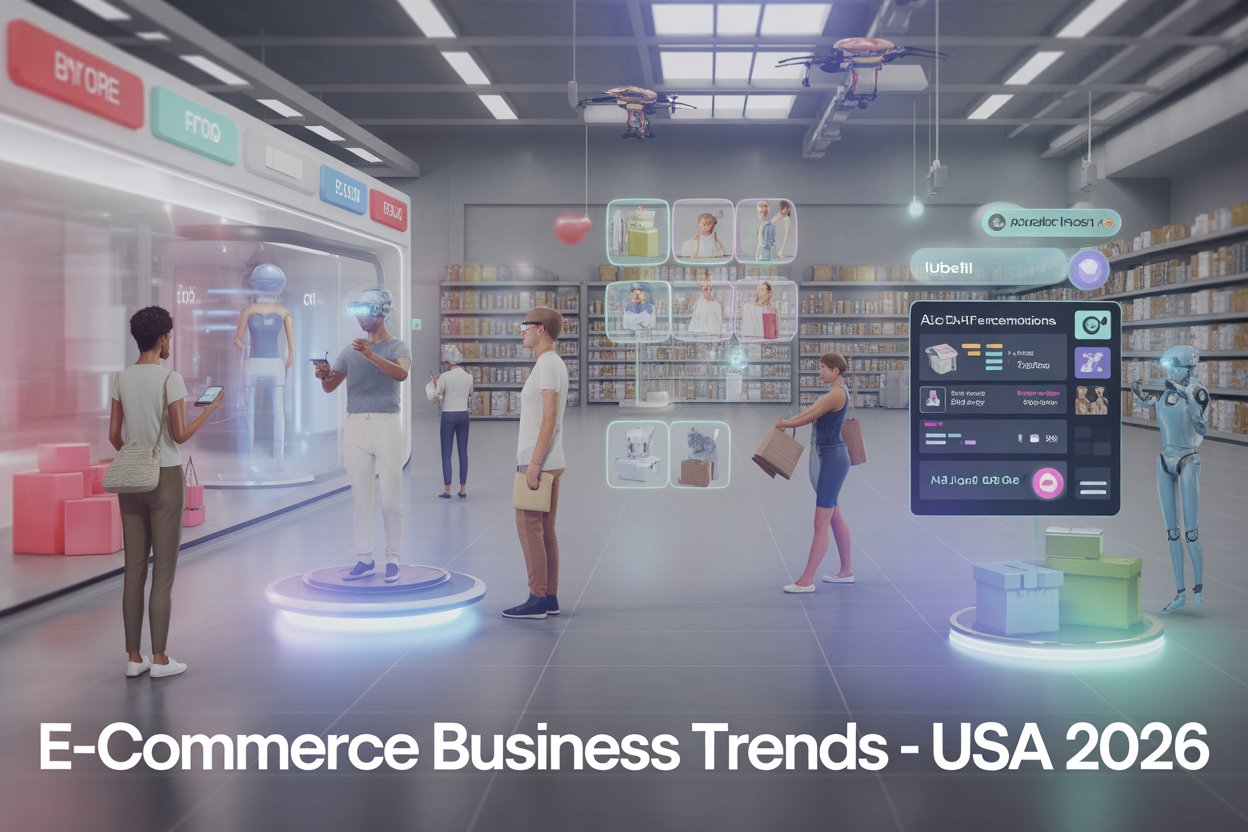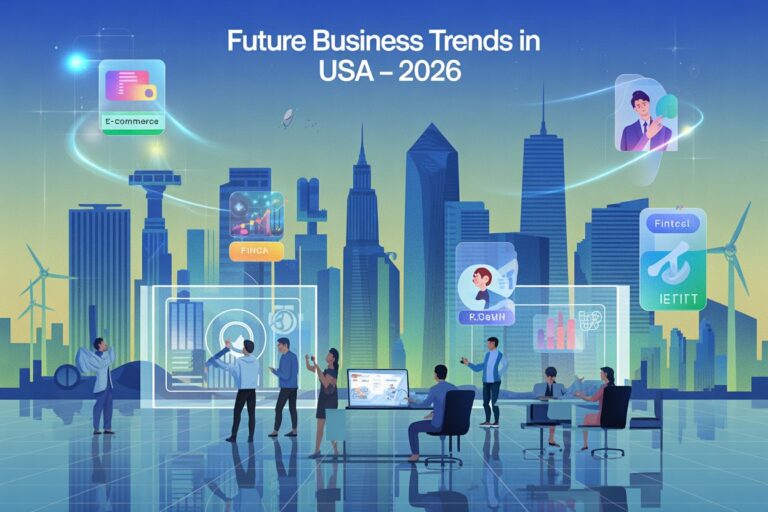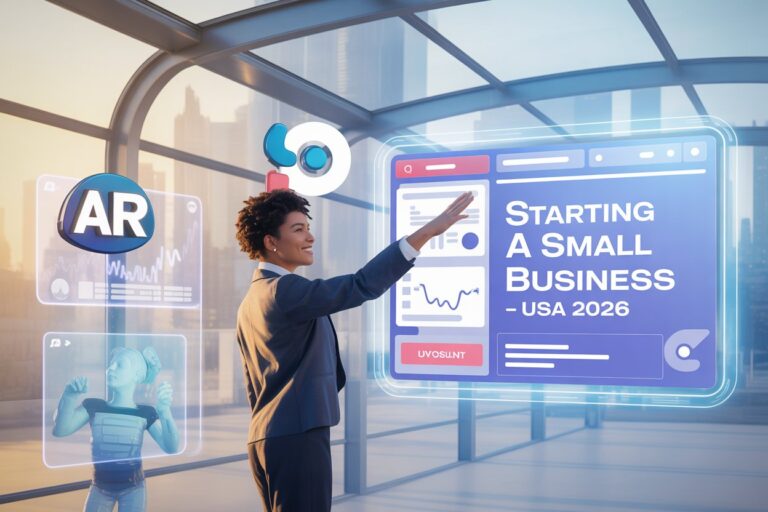E-commerce Business Trends USA
Introduction
The e-commerce industry in the United States is undergoing a significant transformation as consumer behavior, technology, and business models evolve.
With the rapid growth of digital infrastructure and online consumer engagement, understanding the latest trends is essential for entrepreneurs and businesses looking to succeed in 2026.
This article provides an in-depth analysis of the most prominent e-commerce business trends in the USA, specifically tailored to support new website owners in the YMYL (Your Money or Your Life) niche while complying with Google Search Central and AdSense policies.
Why Understanding E-commerce Trends Matters

Staying Ahead in a Competitive Market
Adopting and adapting to emerging trends can provide a competitive edge. With thousands of e-commerce stores launching each year, differentiation through innovation is key.
Enhanced Customer Experience
E-commerce trends are often driven by user preferences. Leveraging these insights can lead to improved customer satisfaction, repeat purchases, and brand loyalty.
Aligning with SEO and Platform Policies
For new websites, particularly in sensitive niches like business legitimacy, adhering to ethical standards and SEO best practices is essential for growth and monetization.
Top E-commerce Trends in the USA for 2026
1. Rise of AI-Driven Personalization
AI algorithms are enabling real-time product recommendations, chatbot support, and dynamic pricing. Personalization boosts conversion rates and improves customer retention.
Practical Example
E-commerce giants like Amazon and Shopify-based stores use AI to suggest products based on browsing history and buying patterns.
2. Voice Commerce and Smart Assistants
Smart speakers and voice-activated devices like Amazon Alexa and Google Assistant are shaping a new shopping experience. In 2026, voice search optimization is a must for e-commerce websites.
Optimization Tip
Include long-tail keywords and natural language queries in your product descriptions to align with voice search behaviors.
3. Subscription-Based Models
Recurring revenue through subscription boxes and services continues to grow. This model enhances customer lifetime value and provides predictable revenue streams.
Examples
Popular niches for subscriptions include beauty products, snacks, digital tools, and eco-friendly goods.
4. Mobile-First and App Commerce
Over 70% of e-commerce traffic now comes from mobile devices. In 2026, having a mobile-optimized site or app is essential.
Must-Have Features
- Responsive design
- Fast loading speed
- Easy navigation
- Mobile payment integration (Apple Pay, Google Pay)
5. Social Commerce Expansion
Platforms like Instagram, TikTok, and Facebook allow users to shop directly through posts and live streams. Influencer marketing and user-generated content will dominate the sales funnel.
6. Green and Ethical E-commerce
Sustainable packaging, carbon-neutral shipping, and ethical sourcing are top priorities for modern consumers. Businesses that integrate green practices will build trust and gain market share.
7. Cryptocurrency Payments
While not mainstream yet, cryptocurrency adoption in e-commerce is rising. Accepting crypto can open up new customer segments and enhance brand innovation.
8. Augmented Reality (AR) Integration
AR allows customers to visualize products (furniture, clothing, accessories) before purchasing. In 2026, more e-commerce brands will adopt AR to reduce returns and enhance UX.
9. Direct-to-Consumer (DTC) Growth
By bypassing third-party retailers, DTC brands can reduce costs and control customer relationships. E-commerce tools make it easier than ever to build a DTC brand.
10. B2B E-commerce Acceleration
B2B buyers increasingly prefer the convenience of self-service digital portals. Platforms offering real-time pricing, bulk ordering, and inventory tracking will thrive.
Building an E-commerce Business in 2026
Step 1: Choose the Right Niche
Focus on demand, competition, and your expertise. Use tools like Google Trends, Ubersuggest, and Amazon Best Sellers to validate your idea.
Step 2: Set Up a Professional Website
Use reliable platforms like Shopify, WooCommerce, or BigCommerce. Ensure mobile responsiveness, fast loading times, and user-friendly navigation.
Step 3: Optimize for SEO and Voice Search
Keyword research, structured data, schema markup, and voice optimization are crucial for organic growth.
Step 4: Implement Secure Payment Options
Integrate multiple payment gateways and secure encryption (SSL) to enhance customer trust and comply with Google’s security guidelines.
Step 5: Leverage Email and Retargeting Campaigns
Email marketing and retargeting can significantly increase ROI. Use automation tools to re-engage cart abandoners and promote new products.
E-commerce Platforms and Tools to Consider
For Store Creation
- Shopify
- Wix eCommerce
- WooCommerce (WordPress)
For Marketing and SEO
- Ahrefs
- Mailchimp
- SEMrush
- Google Search Console
For Payments
- Stripe
- PayPal
- Square
For Analytics
- Google Analytics 4
- Hotjar
- Mixpanel
Challenges to Consider
Cybersecurity Threats
As your store grows, it becomes a target. Regularly update plugins and use firewalls to protect sensitive data.
Logistics and Fulfillment
Inventory management and last-mile delivery can be challenging, especially for startups. Partner with reliable suppliers or use dropshipping to reduce risk.
Compliance with Data Privacy Laws
Ensure your site complies with U.S. privacy laws like CCPA and GDPR if you serve international customers. Display a clear privacy policy and cookie consent banner.
Final Thoughts
The future of e-commerce in the USA is full of promise and innovation. By aligning with these trends, entrepreneurs can build successful, sustainable online businesses.
For new websites focusing on platform legitimacy and business transparency, emphasizing trust, security, and value will be crucial for long-term success.
Always focus on user-first content, avoid misleading claims, and ensure your website complies with all relevant Google policies to qualify for AdSense and rank well in search results.






